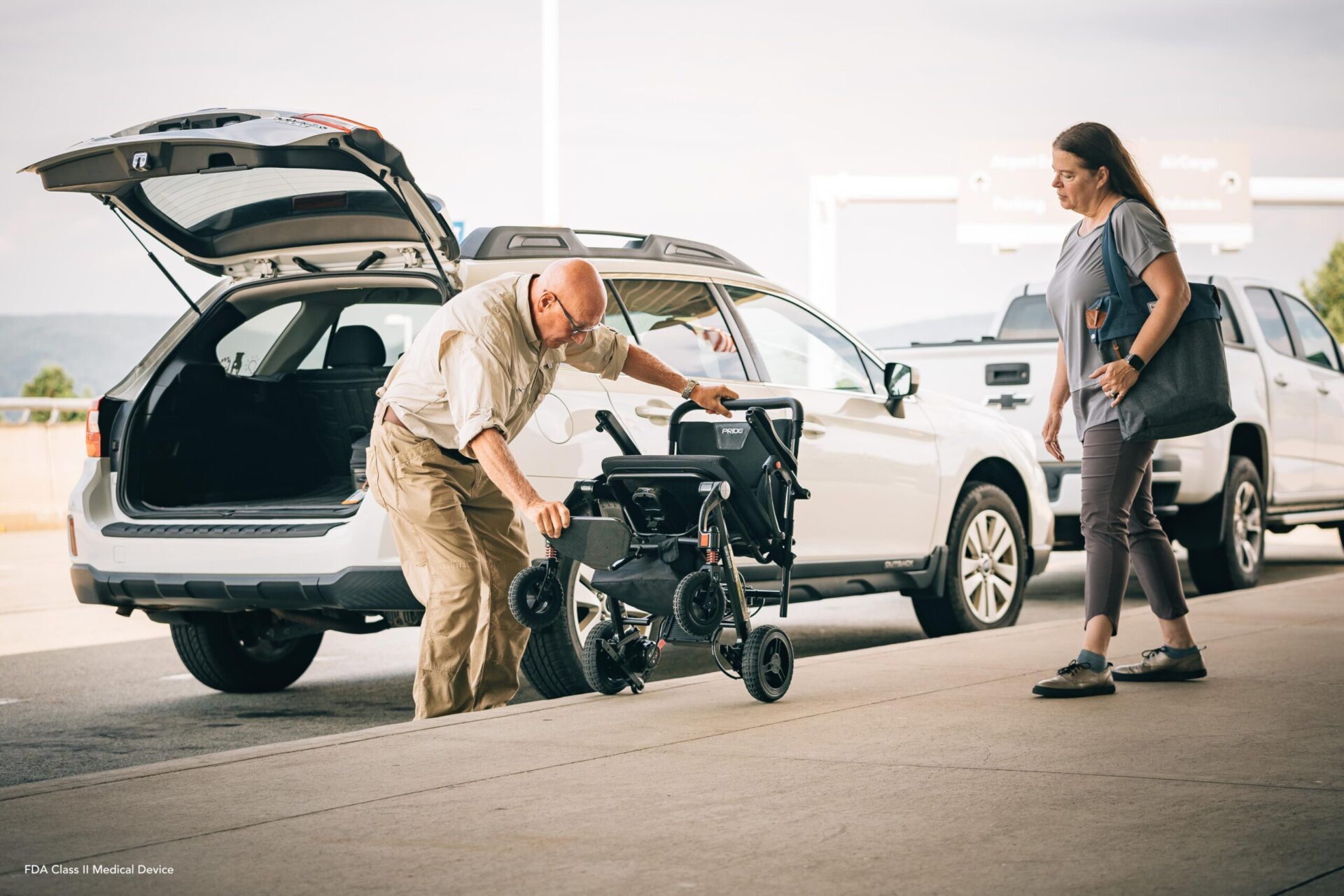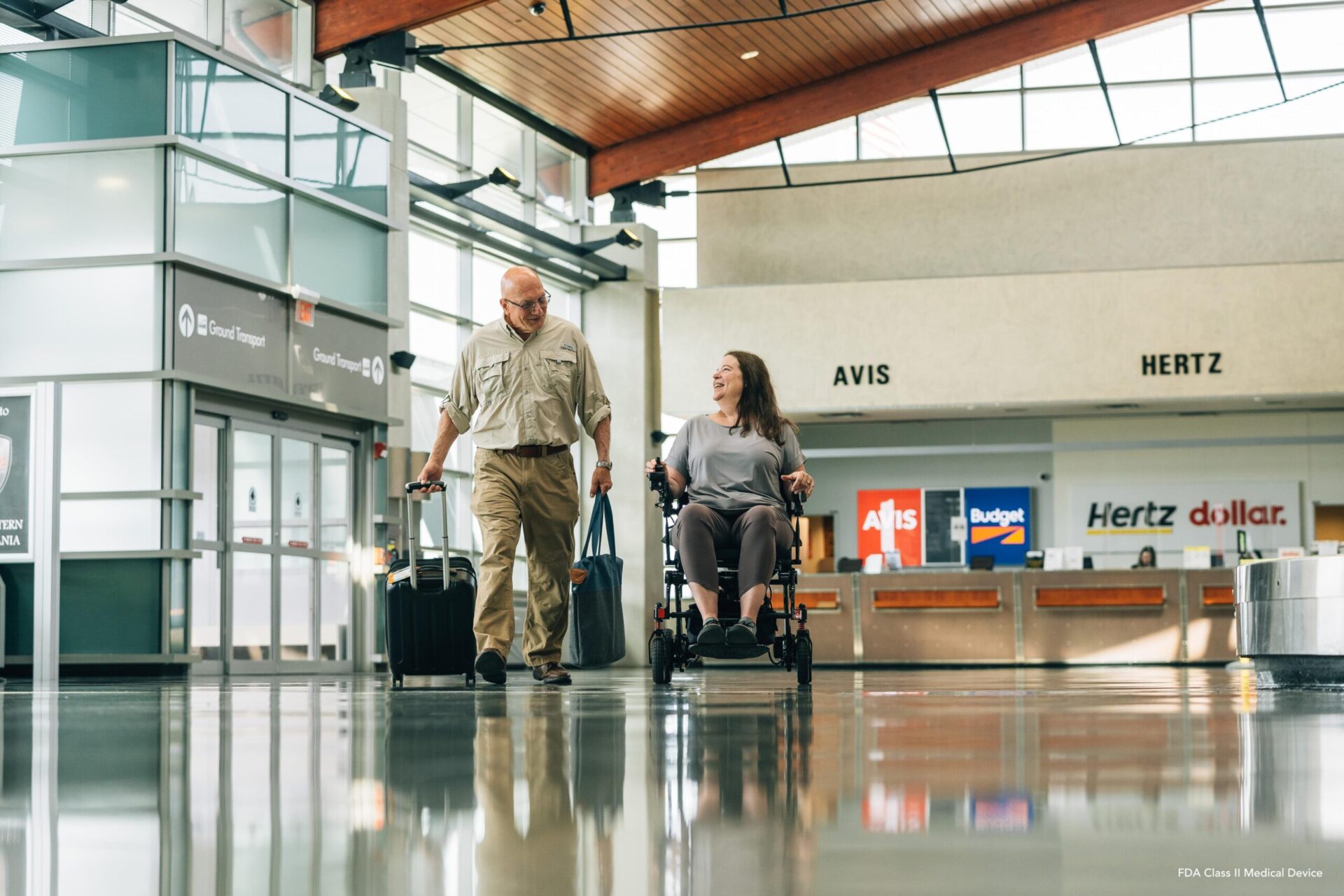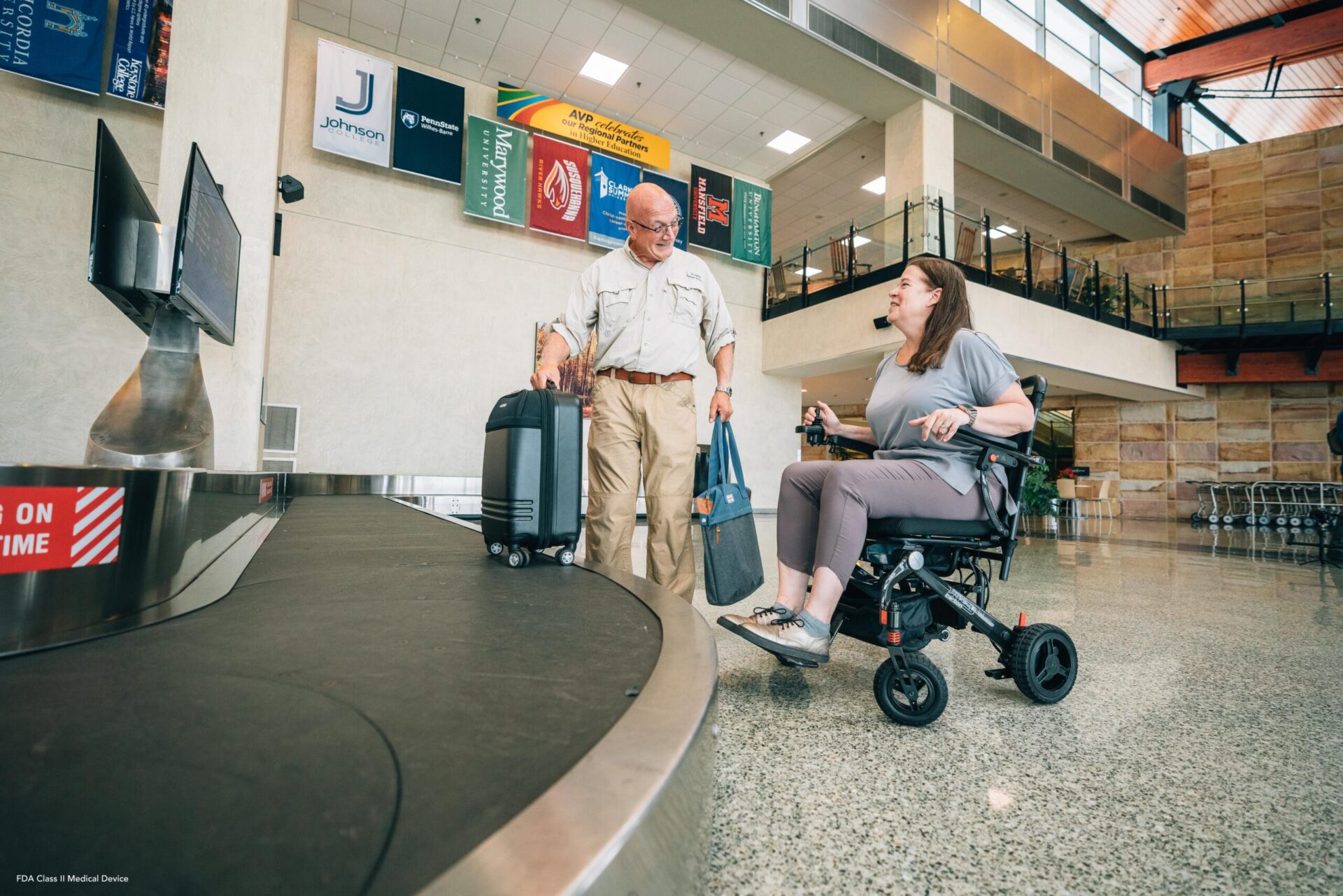Traveling on an Airplane with a Power Wheelchair
If you are a power wheelchair user, airplane travel can seem intimidating. However, with the proper knowledge and preparation, it can be much easier than expected. We flew from Pride Mobility Headquarters in Pennsylvania to Florida to document and experience the process firsthand. For the most enjoyable flight experience, we chose to bring Pride’s newest travel-friendly power wheelchair, the Jazzy Carbon. In this post, we will provide some essential tips and tricks for traveling on an airplane with a power wheelchair!
To watch our in-depth demonstration of taking the Jazzy Carbon on a flight, check out the video below:

Pre-Travel Preparation and Important Regulations
Before you book your flight, be sure to dedicate some time to doing thorough research and planning. Start by contacting your airline of choice to discuss your specific needs and inquire about their policies for passengers with mobility devices. Some airlines have restrictions on the size and weight of power wheelchairs they can accommodate, so make sure your wheelchair complies with their guidelines. Oftentimes it is not explicitly outlined, however, most airlines can accommodate mid-sized power wheelchairs and some smaller full-sized models. As long as your power wheelchair adheres to your selected airline’s size, weight, and safety restrictions and the battery is FAA-compliant, they must accept and transport your device free of charge.
Furthermore, it is important to remember your rights under the ADA (Americans with Disabilities Act) and the U.S. DOT (Department of Transportation) when traveling with a power wheelchair or other mobility device. Your right to fly with a mobility device is protected by the “Airline Passengers with Disabilities Bill of Rights” (click here to read). Within the Bill of Rights, it is also stated that airlines are responsible for any loss and damage that occurs while the device is in their possession. If you would like to read more about your rights and damage procedures, take a look at our previous blog post “Traveling on an Airplane with a Mobility Scooter”.
FAA Rules for Batteries
When preparing for your flight, it is vital to identify what type of battery you have and whether or not it is FAA-compliant. If your power wheelchair operates with an SLA (sealed lead acid) battery, the battery does not have to be removed from the chair and can be stowed as-is. However, if it uses a lithium-ion battery, you must ensure that its capacity is less than 300 watt-hours as regulated by the FAA and TSA. You can determine the watt-hours by multiplying the voltage and amp-hours of the battery (e.g., 12v x 12ah = 144 watt-hours). If the product is less than 300 watt-hours, your battery is considered FAA-compliant and safe to fly!
Most travel-friendly power wheelchairs with lithium batteries come with a specification sheet. This sheet will provide all of the necessary information to communicate to airline staff. During our flights, we chose to bring the Jazzy Carbon by Pride Mobility, which is a lightweight power wheelchair specifically designed for travel. It has an airline-friendly 288-watt-hour lithium battery and excellent maneuverability for indoor spaces. To see more about the Jazzy Carbon, click here to visit the product page.
Check-In and Security

On the day of your flight, it is recommended to arrive at the airport at least one hour before the regular check-in time. Find your airline’s allocated check-in point and inform an agent that you will be traveling with a power wheelchair. You must choose whether you wish to gate-check or baggage-check it. We strongly suggest gate-checking to ensure you can stay in your power wheelchair until boarding. Also, it greatly reduces the risk of loss during transit. Make sure to mention if your device contains lithium batteries and present the staff with the battery specification sheet to prove it is FAA-compliant. The staff will give you paperwork to fill out regarding your power wheelchair and assign it a tag to identify it as an assistive device, similar to a luggage tag.
When check-in is concluded, the next step is going through TSA security. If you must remain in your power wheelchair throughout the process, there are a few extra safety procedures to complete. Any removable belongings, including shoes, purses, outerwear, etc., can be put through the X-ray machine. Then, instead of going through the full-body scanner, you will be guided to a different area to complete a full-body pat down and thorough inspection of your device. An agent will examine and swab your power wheelchair to check for any explosives. Once you are cleared, be sure to collect any belongings and proceed to your gate.
Boarding
At your departure gate, you may choose to inform the staff about your disability or assistive device. This often allows early boarding, providing ample time for gate-checking your power wheelchair and transferring to a transport chair if necessary. At boarding time, proceed to the gate, scan your boarding pass, and head to the jet bridge. To gate-check your device, ride it to the jet bridge’s end, typically where strollers are checked. We recommend checking it without folding/disassembling it, in an effort to prevent damage. Be sure to remove any belongings and lithium batteries, and stow them in your carry-on. If your power wheelchair’s joystick is easily detachable, we suggest removing it and taking it on board as well. From there, you can board the plane whether by foot or in an airline-supplied transport chair, and find your seat for the flight!
Arriving at Your Destination
Upon arriving at your destination, it is time to deplane and pick up your power wheelchair. Your device will be at essentially the same place you dropped it off at the jet bridge. Make sure to inspect it for any damages or signs that it was mishandled/dropped. If your power wheelchair appears damaged, alert an airline staff member right away. This way, they can properly handle the situation and start a claim. Otherwise, if it has not incurred any damage, reattach any belongings, the battery/batteries, and the joystick if you removed it. Verify that it is working properly and if so, you are good to go! Proceed to baggage claim to pick up any checked baggage and exit the airport to begin your trip.
Final Thoughts
Traveling on an airplane with a power wheelchair is entirely possible with the right preparation and knowledge. Taking the time necessary to review guidelines by the airline, FAA, and ADA can make the process smooth and enjoyable. With the right equipment and a cooperative approach to airport procedures, individuals with mobility challenges can confidently explore new destinations. If you have any questions or inquiries, feel free to reach out to us. We have non-commissioned sales experts ready to help find the right scooter for you. Thank you for reading and happy travels!
Don’t forget to subscribe to our Youtube Channel for a chance to win a FREE MOBILITY SCOOTER!

Andrew Fatalo is the owner of Statewide Mobility Inc & Mobility Scooters Direct. He has been in the mobility product industry since 2005 and knows a ton about e-commerce marketing. He gives back to the handicap community by hosting mobility scooter and electric wheelchair give-aways which you can learn more about by following his companies on Facebook.






